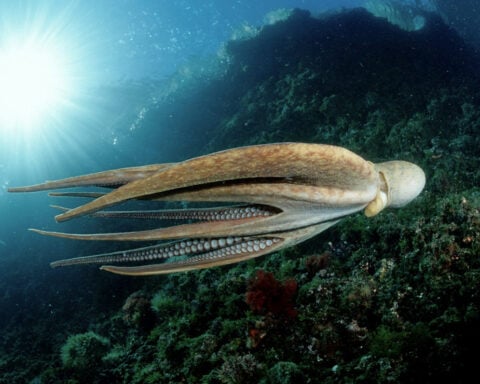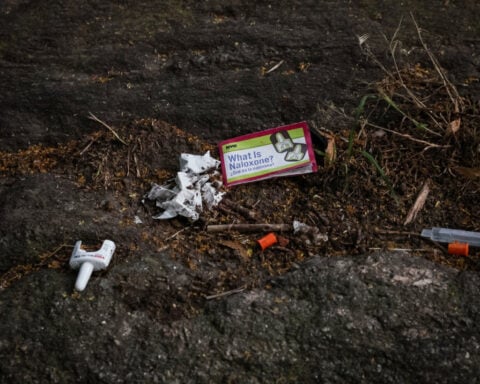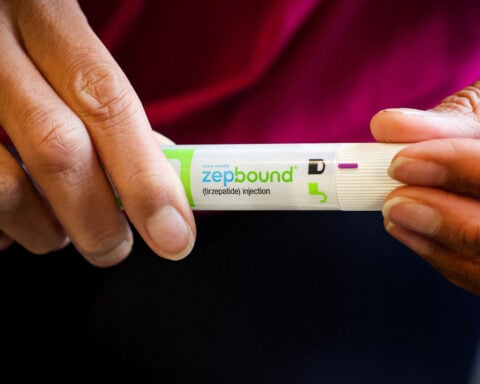MADRID (Reuters) - The 15th-century explorer Christopher Columbus was a Sephardic Jew from Western Europe, Spanish scientists said on Saturday, after using DNA analysis to tackle a centuries-old mystery.
Several countries have argued over the origins and the final burial place of the divisive figure who led Spanish-funded expeditions from the 1490s onward, opening the way for the European conquest of the Americas.
Many historians have questioned the traditional theory that Columbus came from Genoa, Italy. Other theories range from him being a Spanish Jew or a Greek, to Basque, Portuguese or British.
To solve the mystery researchers conducted a 22-year investigation, led by forensic expert Miguel Lorente, by testing tiny samples of remains buried in Seville Cathedral, long marked by authorities there as the last resting place of Columbus, though there had been rival claims.
They compared them with those of known relatives and descendants and their findings were announced in a documentary titled "Columbus DNA: The true origin" on Spain's national broadcaster TVE on Saturday.
"We have DNA from Christopher Columbus, very partial, but sufficient. We have DNA from Hernando Colón, his son," Lorente said in the programme.
"And both in the Y chromosome (male) and in the mitochondrial DNA (transmitted by the mother) of Hernando there are traits compatible with Jewish origin."
Around 300,000 Jews lived in Spain before the 'Reyes Catolicos', Catholic monarchs Isabella and Ferdinand, ordered Jews and Muslims to convert to the Catholic faith or leave the country. Many settled around the world. The word Sephardic comes from Sefarad, or Spain in Hebrew.
After analysing 25 possible places, Lorente said it was only possible to say Columbus was born in Western Europe.
On Thursday, Lorente said they had confirmed previous theories that the remains in Seville Cathedral belonged to Columbus.
Research on Columbus' nationality was complicated by a number of factors including the large amount of data. But "the outcome is almost absolutely reliable," Lorente said.
Columbus died in Valladolid, Spain, in 1506, but wished to be buried on the island of Hispaniola that is today shared by the Dominican Republic and Haiti. His remains were taken there in 1542, then moved to Cuba in 1795 and then, it had been long thought in Spain, to Seville in 1898.
(Reporting by Graham Keeley; Editing by Emelia Sithole-Matarise)

 How to save a fentanyl victim: Key facts about naloxone
How to save a fentanyl victim: Key facts about naloxone
 Eight convicted in France over murder of teacher who showed Prophet caricature
Eight convicted in France over murder of teacher who showed Prophet caricature
 Death toll in German Christmas market car-ramming rises to five, more than 200 injured
Death toll in German Christmas market car-ramming rises to five, more than 200 injured
 Syria's new rulers name foreign minister amid push for international relations
Syria's new rulers name foreign minister amid push for international relations
 Pakistan dismisses US official's warning over missile programme as unfounded
Pakistan dismisses US official's warning over missile programme as unfounded
 Weightlifting Taiwan granny, 90, garners cheers, health benefits at gym
Weightlifting Taiwan granny, 90, garners cheers, health benefits at gym
 Russia's UK embassy denounces G7 loans to Ukraine as 'fraudulent scheme'
Russia's UK embassy denounces G7 loans to Ukraine as 'fraudulent scheme'
 Retailer Party City files for bankruptcy, will wind down 700 stores
Retailer Party City files for bankruptcy, will wind down 700 stores
 Philadelphia 76ers star Joel Embiid working through injuries and mental health struggles
Philadelphia 76ers star Joel Embiid working through injuries and mental health struggles
 Soccer's top players have had enough, as FIFA's new super-sized tournament sparks a revolt
Soccer's top players have had enough, as FIFA's new super-sized tournament sparks a revolt








